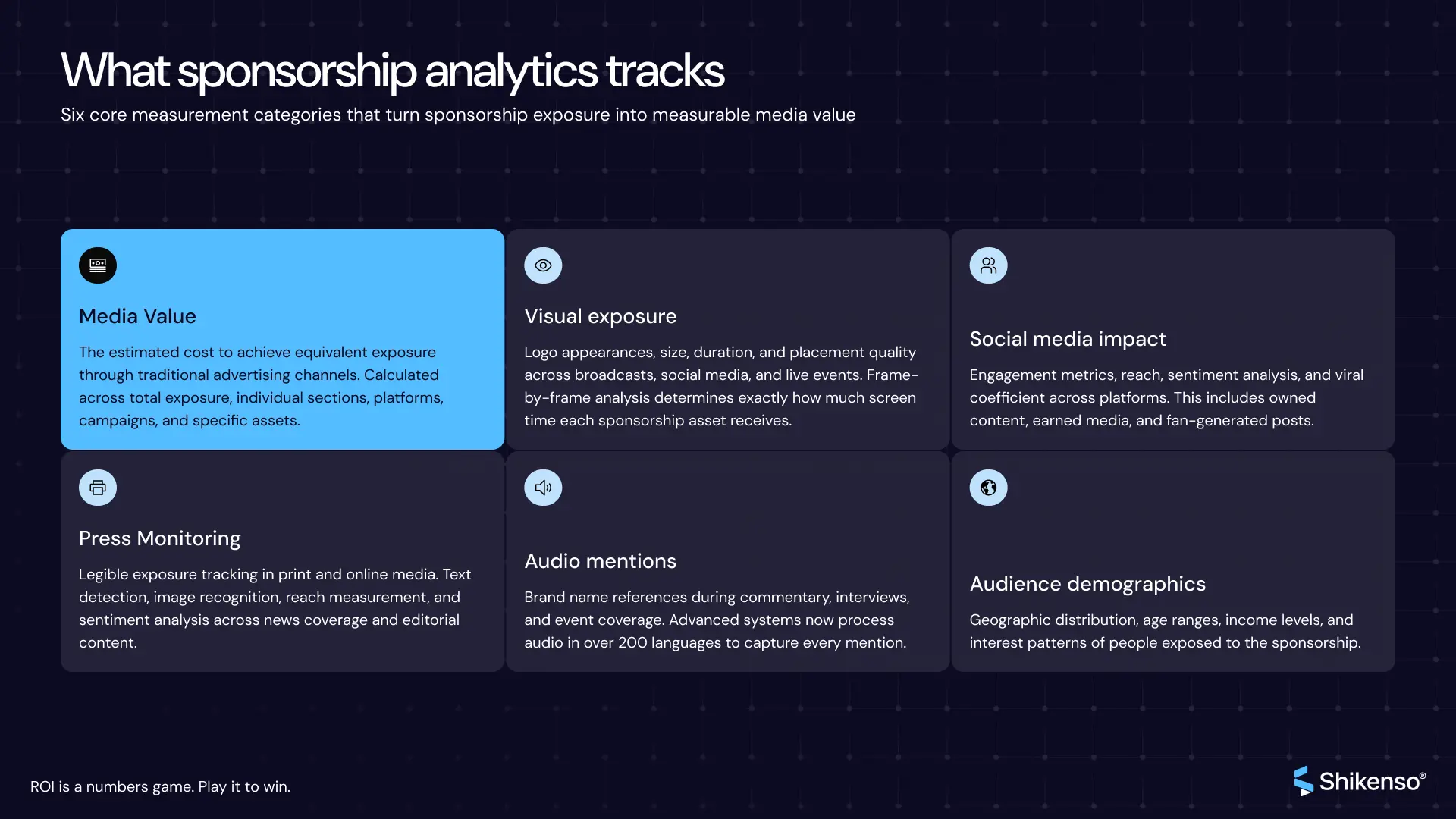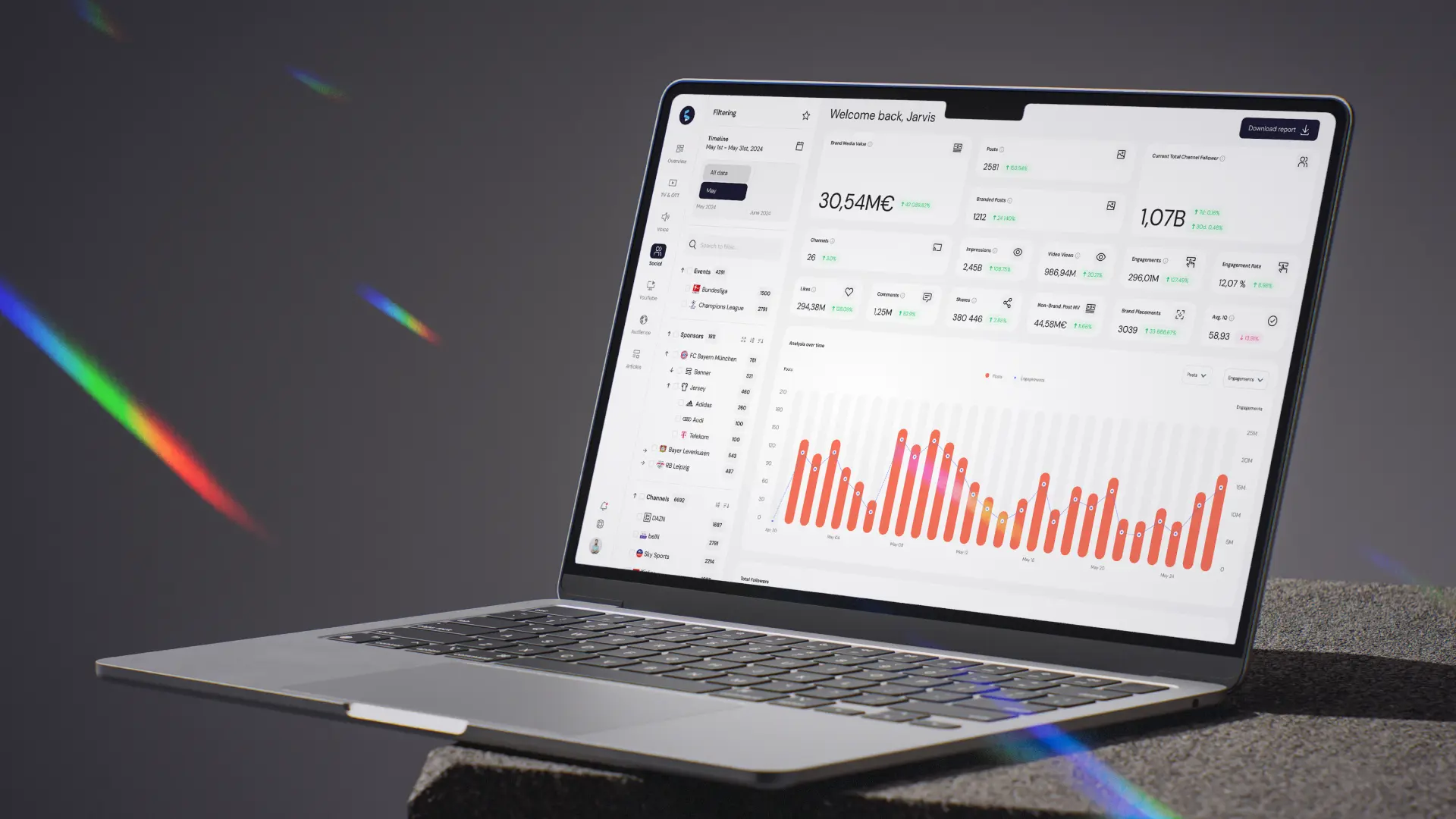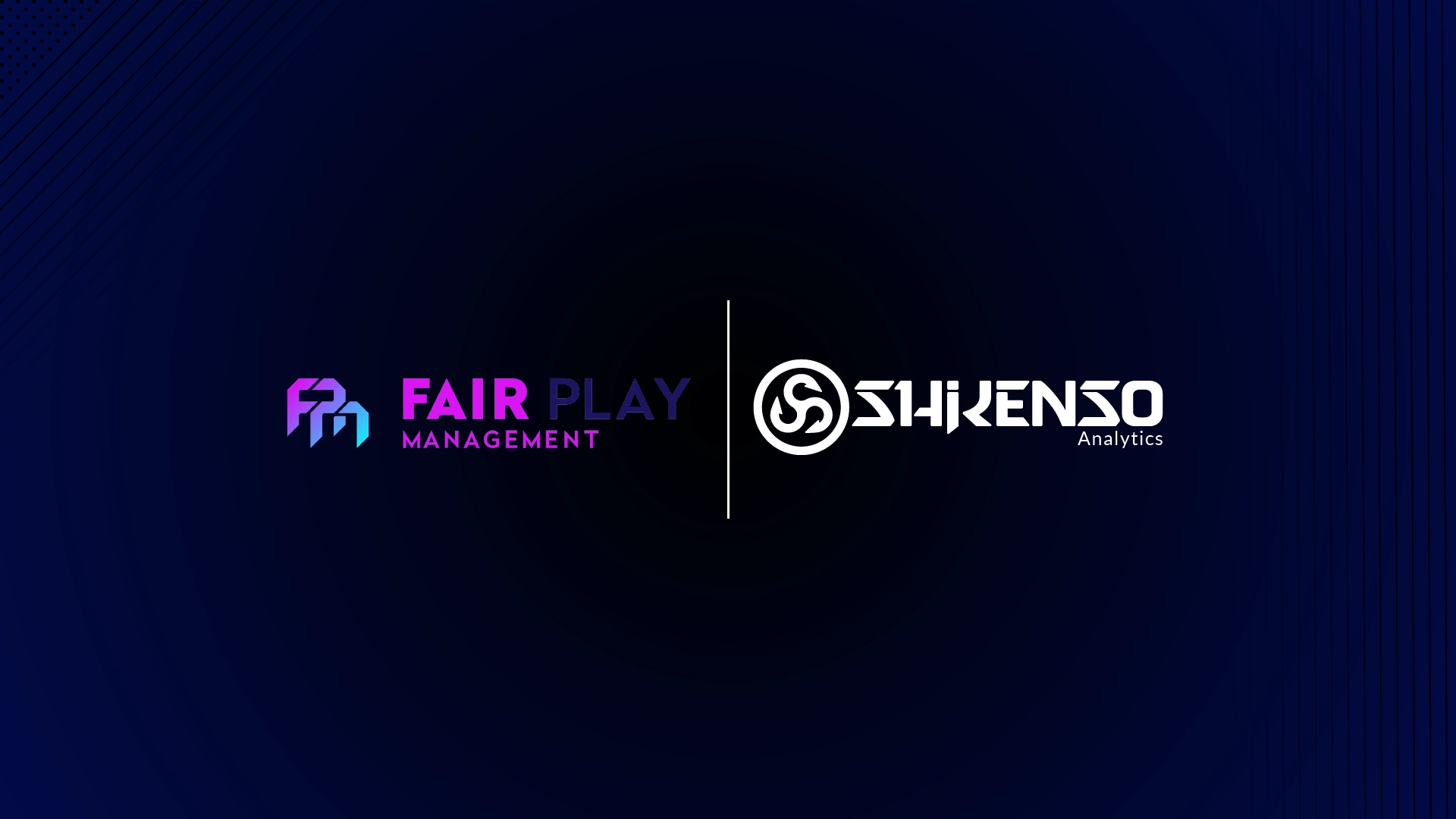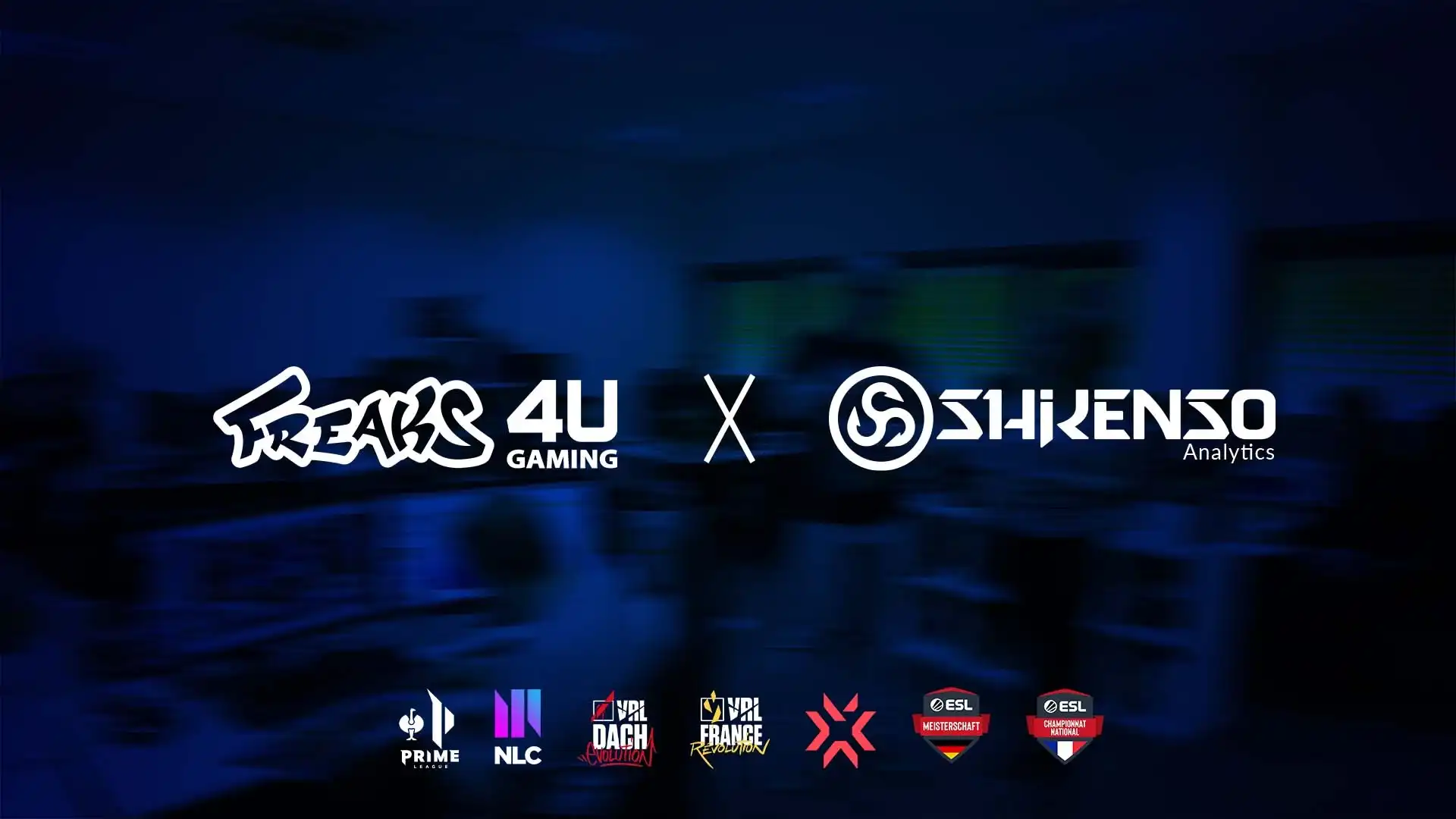A brand just signed a seven-figure sponsorship deal. Three months later, they're still waiting for the first report.
When it finally arrives, the data's a mess. Exposure estimates with no methodology. Media value calculations that don't add up. No breakdown by channel. No way to verify the numbers or understand what's actually driving visibility.
The finance director wants answers. The marketing team has none to give.
As a matter of fact, this is the reality for brands operating without transparent, real-time sponsorship analytics. Months-long reporting cycles. Black-box calculations. Zero visibility into whether the investment is working until it's too late to adjust.
European sponsorship hit €32.9 billion in 2024. Yet brands still struggle to measure sponsorship ROI.
The gap between spending and understanding has never been wider.
What Sponsorship Analytics Actually Measures
Sponsorship analytics is the systematic tracking and valuation of brand exposure across all touchpoints where a sponsorship appears. It quantifies what used to be gut feeling.
The difference between traditional measurement and modern sponsorship analytics is straightforward. Traditional methods relied on post-event surveys and rough media equivalency estimates. Modern analytics use AI-powered computer vision, real-time data capture, and multi-channel tracking to measure actual performance.

The data-driven approach removes ambiguity from sponsorship strategy. Teams can justify budgets with concrete numbers instead of hopeful projections.
Modern platforms track exposure across TV broadcasts, social media, Twitch, YouTube, OTT platforms, online media, and press content. Everything from jersey branding and LED boards to backdrop placements and voiceovers gets captured. This multi-channel approach ensures nothing slips through the gaps.
Why Traditional Sponsorship Measurement Falls Short
The old playbook doesn't work anymore because the media landscape fragmented.
In the US alone, streaming platforms now account for 40% of live sports viewership. Content appears across dozens of digital channels simultaneously. A single sponsorship activation generates exposure across broadcast TV, YouTube clips, Instagram Stories, TikTok highlights, and Twitter commentary.
Traditional measurement methods simply weren't built for this complexity.
Budget constraints affect sponsorship strategies, with smaller organisations struggling to compete in high-profile events. But throwing more money at the problem doesn't solve it when you can't track where that money goes or what it achieves.
Over-reliance on immediate metrics like impressions fails to capture long-term impact on brand loyalty and customer lifetime value.
Consider what happens without proper analytics. Rights holders struggle to justify renewal fees. Sponsors can't optimise activation spend. Both parties operate on assumption rather than evidence.
The sponsorship deal that looked brilliant in the proposal stage might deliver half the expected exposure. Nobody knows until it's too late to adjust.
Siloed data makes this worse. When tracking happens across multiple tools and manual processes, inconsistencies creep in. Reporting cycles drag on for weeks. Partners lose confidence because the numbers don't match reality.
The Real-Time Advantage in Sports Marketing
Real-time analytics changed the economics of sponsorship.
Instead of waiting weeks for post-event reports, teams now track performance during live events. If a sponsored activation underperforms in the first quarter, adjustments happen before halftime.
This matters because tent-pole activations deliver higher ROI compared to season-long commitments. But you only capture that advantage when you can measure and optimise in real time.
The application extends across the entire sponsorship lifecycle:
- Pre-event planning: Historical data reveals which asset placements deliver maximum visibility. Teams allocate budgets based on proven performance rather than tradition.
- Live optimisation: Monitoring tools show exactly which activations are working. Resources shift to high-performing elements whilst events are still running.
- Post-event analysis: Comprehensive reports quantify total media value, audience reach, and engagement metrics. This data informs renewal negotiations and future strategy.
Social media adds another dimension. Social media sponsorships increase engagement significantly on platforms like Instagram, TikTok, and YouTube. Real-time tracking captures this amplification effect as it happens.
Always-on analytics means clubs and leagues can analyse everything from live match broadcasts to training session videos and press conferences. Every touchpoint becomes measurable. Every sponsor gets the full picture of their investment's performance.
Proving ROI When Finance Asks Hard Questions
The CFO wants one number: what did we get for what we spent?
Sponsorship analytics provides that number, but the calculation has evolved beyond simple returns.
For decades, ROI was defined by visibility metrics that showed where brands appeared, not whether they changed anything.
Shikenso season 2024/2025 data of European football leagues revealed that actual media value running 39% higher than traditional measurement methods calculated for major beverage brands in Premier League sponsorships.
The gap between perceived value and actual value often runs in both directions. Some sponsorships overperform expectations. Others underdeliver dramatically. You can't know which category you're in without proper analytics.
Detailed breakdowns of exposure time, visibility quality, media value, and engagement give sponsors the proof they need. When partners see verified data instead of estimates, confidence increases. Upsell opportunities open. Renewals become conversations about expansion rather than justification.
How Data-Driven Decisions Transform Sponsorship Strategy
Analytics shifts sponsorship from art to science.
Variable compensation models now use KPIs like broadcast audience and brand health impact to structure rights fees. This protects sponsors from downside risk whilst rewarding properties that overdeliver.
This fundamental change in deal structure only works when both parties trust the underlying data.
Practical applications include:
- Portfolio optimisation: Brands with multiple sponsorships can compare performance across properties. Capital flows to partnerships that deliver measurable results.
- Asset valuation: Rights holders price inventory based on proven exposure metrics rather than negotiating in the dark. This professionalises the entire market.
- Activation refinement: Detailed analytics reveal which activation elements drive engagement. Future campaigns double down on what works and eliminate what doesn't.
- Competitive benchmarking: Understanding how rival brands achieve visibility helps shape more effective strategies.
GIANTX exemplifies the commercial potential of this approach. Over 21 months, the esports organisation used data-driven sponsorship insights to grow their media value by 2.7 times and onboard 17 new brand partners—including KitKat and Samsung. The analytics equipped them to demonstrate clear value propositions to prospective sponsors whilst diversifying revenue streams beyond competitive performance.
This collaboration earned us recognition from the European Sponsorship Association, winning this year's prestigious ESA Award in the Measurement & Insight category.

The technology advantage compounds over time as more data accumulates.
Centralised insights replace scattered spreadsheets. One measurement model creates consistency across all partnerships. Automated reports cut manual workload and speed up delivery. Partners get the clarity they're paying for.
What Comes Next
The sponsorship market continues growing.
But growth alone doesn't guarantee success for individual deals. The winners will be organisations that treat sponsorship as a measurable, optimisable marketing channel rather than a branding expense with vague returns.
The shift from "we think it worked" to "here's exactly what we achieved" isn't optional anymore. Finance teams demand proof. Marketing teams need justification for budget increases. Rights holders must demonstrate value to renew partnerships.
Sponsorship analytics provides that proof.
The technology exists. The methodologies are proven. The only question is whether your organisation will adopt data-driven sponsorship strategy before competitors do.
Turn Exposure Into Measurable Value
Sponsors expect proof, not promises. We track visual, audible, and legible brand mentions across every channel that matters—TV broadcasts, social platforms, streaming services, press coverage.
Our AI models detect placements with precision, even in complex visual environments. You get detailed breakdowns of exposure time, visibility quality, and media value for each partner.
One platform. Unified metrics. Real-time tracking. Automated reports. No manual workload. No siloed data. Just clear, data-backed proof of sponsorship impact that strengthens partnerships and secures renewals.

Get new insights straight to your inbox
Don’t miss out on the insights that the press and media rave about!







